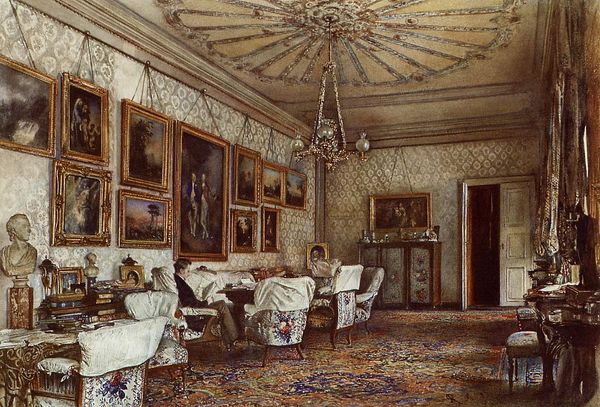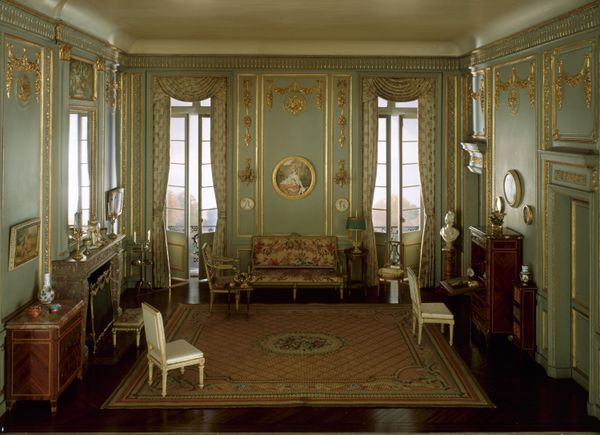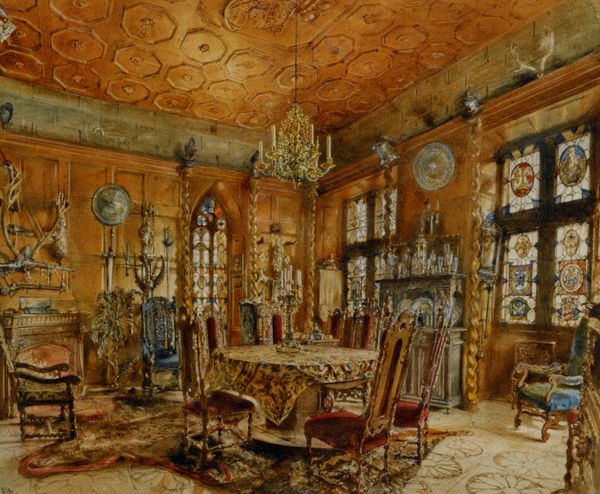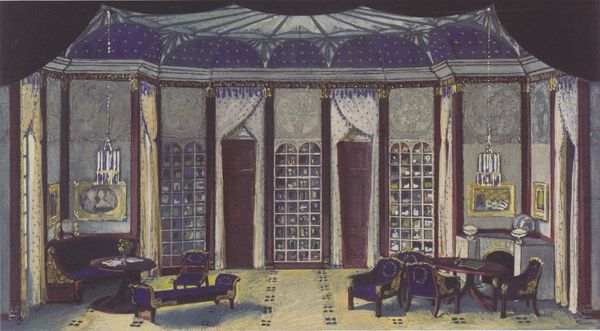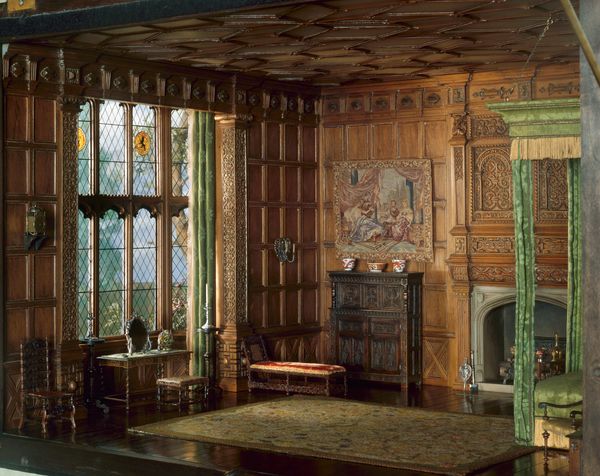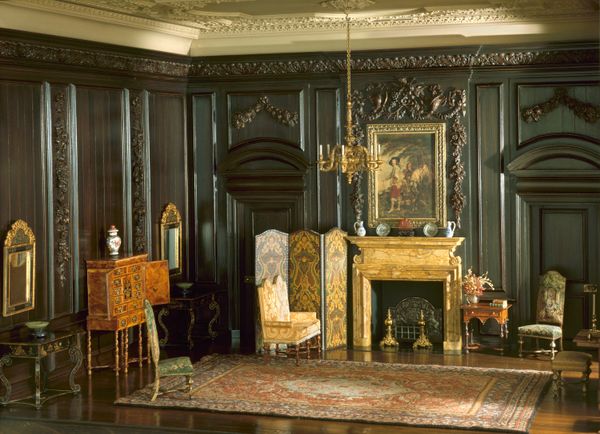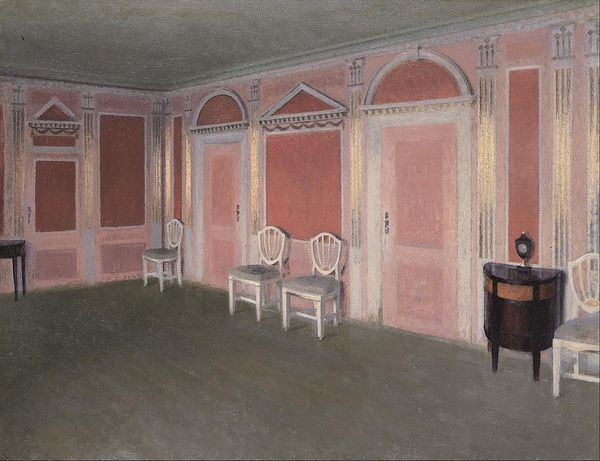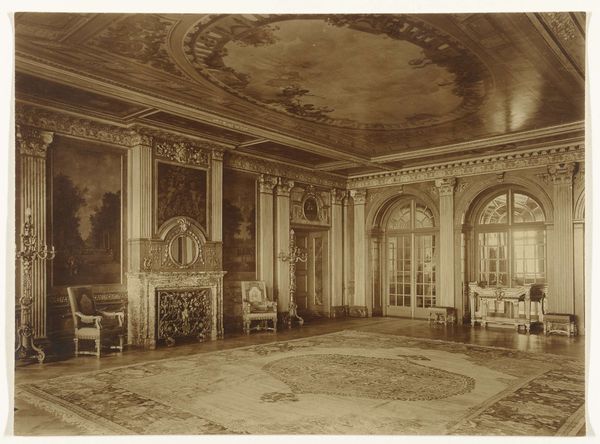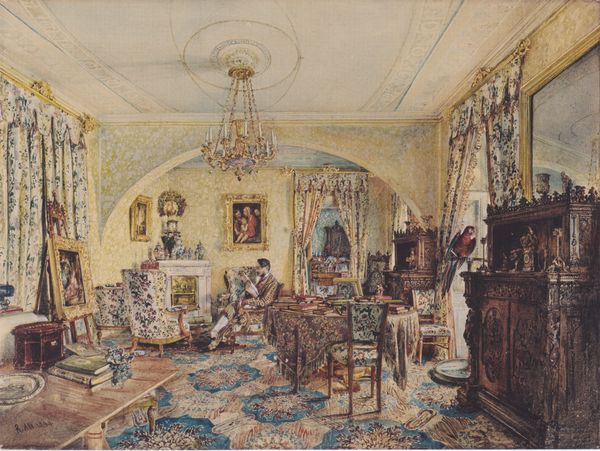
painting, textile, watercolor, architecture
#
painting
#
furniture
#
textile
#
architectural photography
#
house
#
watercolor
#
orientalism
#
genre-painting
#
architectural
#
decorative-art
#
architecture
#
building
Copyright: Public domain
Curator: This is Rudolf von Alt’s "The Turkish Salon, Villa Hügel, Hietzing, Vienna," painted in 1877. It is a watercolor showcasing an opulent interior. Editor: It feels very stage-like, almost theatrical with that heavy blue and the elaborate decorative schemes. A stage set for an orientalist fantasy, wouldn't you say? Curator: Absolutely, that is palpable. Observe the repeating vertical stripes along the wall, visually segmenting the space while leading the eye upwards, emphasizing the height of the room. Consider also how von Alt carefully renders the textures; the plushness of the cushions, the intricacy of the chandelier. Editor: And those heavy curtains! They speak volumes about privilege and exclusion. Who is this room for, and who is kept out? The Orientalist style was very fashionable in Europe, but often romanticized the East. So much about staging an encounter... The reality of colonial exploitation often remains unseen, or worse, completely overlooked. Curator: A crucial point. And formally, it's fascinating how von Alt balances light and shadow. The open doors invite the outdoors in, contrasting with the room's deliberate ornamentation. There’s tension between reality and fantasy that speaks to both literal and metaphorical thresholds. Editor: Precisely, I would underscore your comment on tension! These details were selected carefully to signal not only power, but, importantly, specific types of taste. While appearing decorative, it performs a careful display of what constitutes cultured distinction. Curator: Indeed, these interior views, while seemingly passive observations, become active constructions of space and identity. Editor: It does leave one thinking, about the stories hidden in plain sight in seemingly straightforward portrayals of "beauty" or "good taste." What isn't immediately evident often warrants our most critical and sustained consideration.
Comments
No comments
Be the first to comment and join the conversation on the ultimate creative platform.
